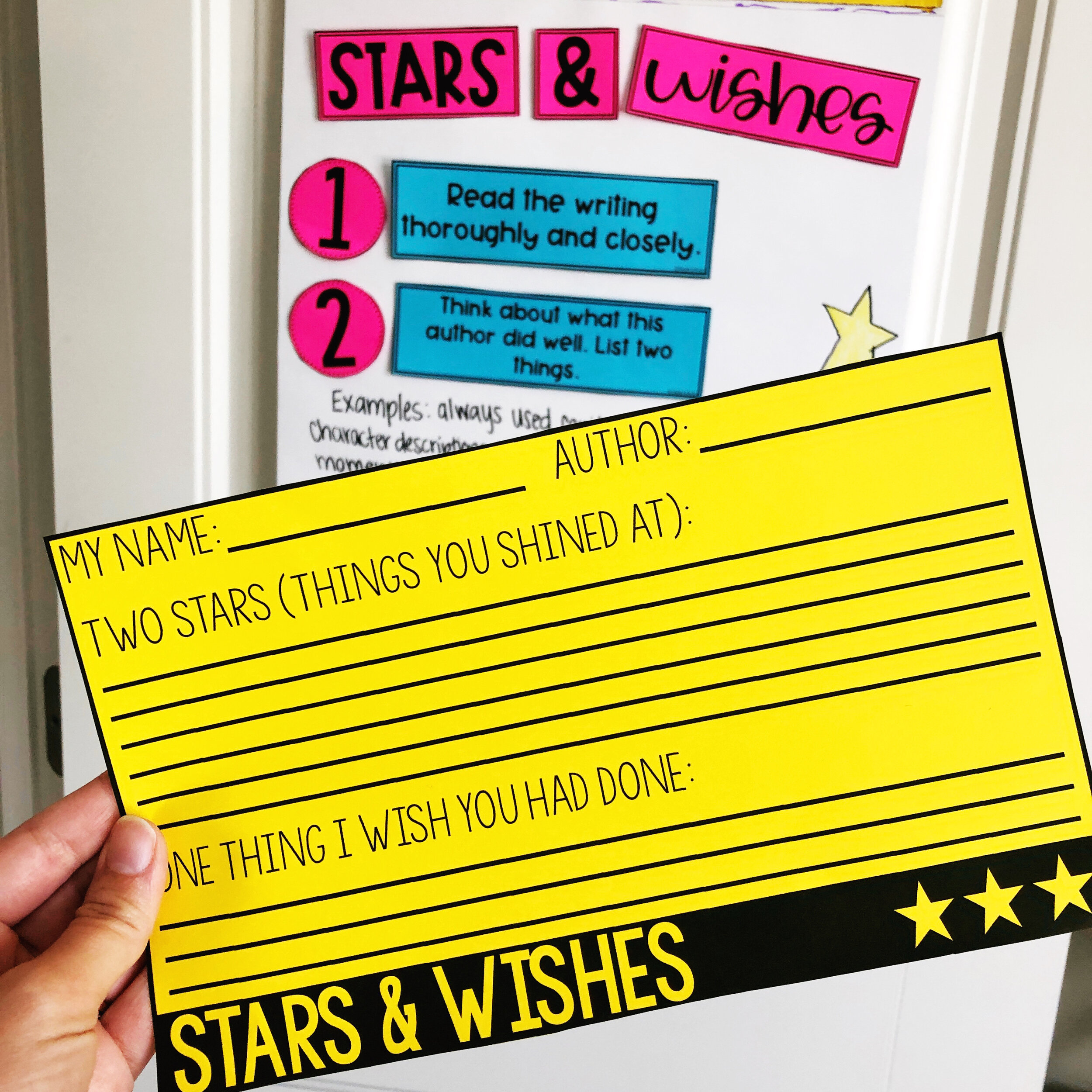Three Peer Editing Strategies to Try
Peer editing, in my humble opinion, is POWERFUL. Think about it: it’s the perfect bridge between self-reflection and teacher feedback. Our own eyes can skim right over errors that are obvious to another person, and a peer’s words sometimes just sink in differently than a teacher’s. I think every classroom should have some sort of peer editing routine implemented into their writer’s workshop time.
Let me quickly add: not every peer editing experience is going to be magic. Not all of your kids are evenly yoked when it comes to writing ability. Some will still be solidifying their skills, and others will have mastered your standards before they ever came to you. THIS is why a routine is crucial. The kids with emerging skills can be successful if they know exactly what the steps are. Even if they can’t find any errors in the writing they were given (which may happen if you heterogeneously group students for peer review), they can participate in it.
Below, I have three different peer editing techniques that you can choose to use with students. I personally like to make them familiar with all three at different points in the year, so we can change it up as needed. It keeps things a little more fresh throughout the year. You could introduce a new one every unit that you do during the first half of the year, and then bring them back in randomly. Or you could choose one to use during the first semester, then teach a new one during the second semester. Only doing two different routines through the year is still great!
Peer Editing Routines
Stars and Wishes
You may know this one, but I love how no-frills this routine is! If I don’t have any other peer editing routine prepped on a day of writing that I want kids to edit, you can implement stars and wishes in no time at all. All I do is give each student a sticky note. After they have read a peer’s paper, they write two “stars” and one “wish” on the sticky note. They stick the note on the front of the paper and return it to the author. Stars are things that the student did well in their writing. The wish is one thing they wish they had included or strengthened.
If you have a class who may need a little structure surrounding their wishes, I would narrow down the things that they need to look for. We all know that kid (or group of kids) who will go a little rogue with their comments, and they risk hurting others’ feelings, or simply giving feedback that doesn’t help. So, if you feel the need to jot down some wish examples on your white board or a chart, that could be helpful for your kiddos if this is their first time doing this!
Stars and Wishes Printable
Use a Rubric
Many of my writing projects include two versions of the same rubric. This is easy to re-create yourself! Take the rubric you are going to use to grade a piece of writing, and white out any areas that ask for a grade or final total. I don’t like for the kids to actually assign grades to each other, but instead to highlight the portions of the rubric that they think best apply to that paper. It gives the author of the writing a rough idea of how close they are to the requirements of the assignment before turning it in.
Rainbow Editing
This is a popular method of editing to use by students during self-editing, but it also works as a peer editing technique! Have students proof-read each others’ papers, and use a color-coding system to circle different types of errors. Rainbow editing really only gets into mechanics, because of how simplified it is. Essentially, the kids read over a text, and circle/underline/box the errors according to a color-coding system that you give them. I see this online a lot as a self-editing routine, which is great. But, peer editing can be a little more powerful…simply because a new set of eyes is less likely to skim over that lowercase proper noun.
To get some great writing projects and activities to test these routines out with, click the button below!
To grab these anchor chart pieces and Stars and Wishes Printable for FREE, sign up with your email address!















